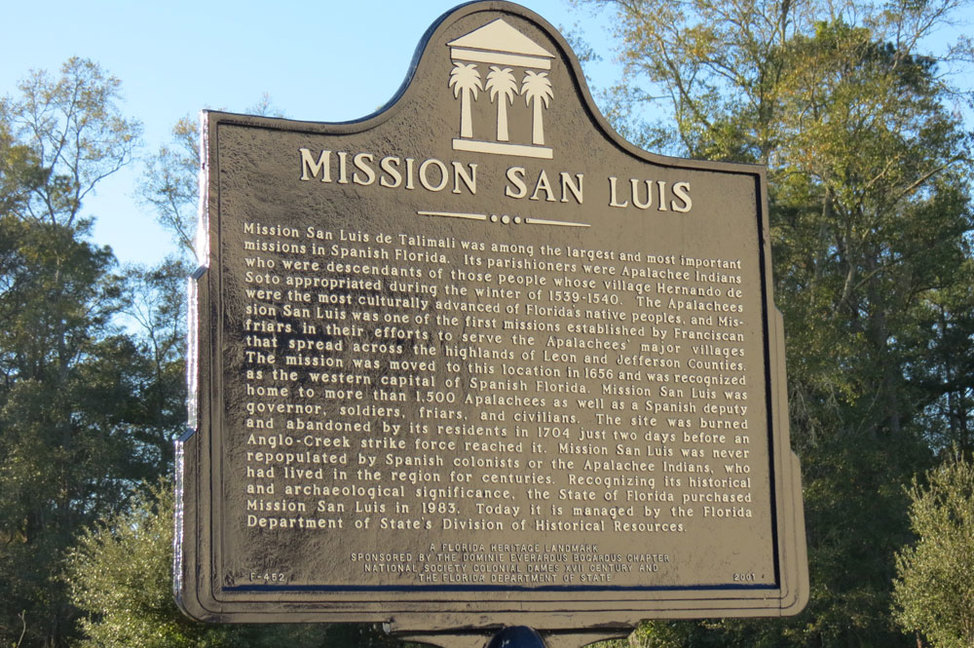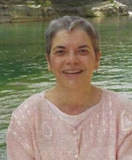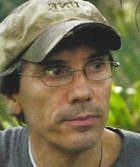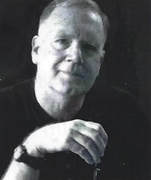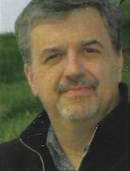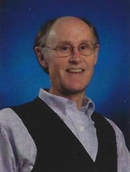Borderland Conferences
In 2012 a gathering of scientists and scholars met to discuss the meaning and possibilities of the site in the First Floridian First American Conference in Monticello, Florida. Pre-Clovis artifacts were displayed and studied increasing lay and scholarly interest in the Red Hills Region. Learn more click here!
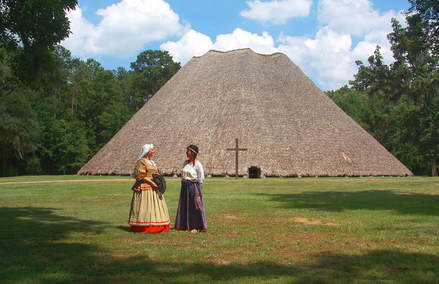
Mission San Luis de Apalachee (also known as San Luis de Talimali) was a Spanish Franciscan mission built in 1633 in the Florida Panhandle, two miles west of the present-day Florida Capitol Building in Tallahassee, Florida. It was located in the descendent settlement of Anhaica (also as Anhayca Apalache or Inihayca) capital of Apalachee Province. The mission was part of Spain's effort to colonize the Florida Peninsula and to convert the Timucuan and Apalachee Indians to Christianity. The mission lasted until 1704 when it was evacuated and destroyed to prevent its use by an approaching militia of Creek Indians and South Carolinians. From Wikipedia, the free encyclopedia
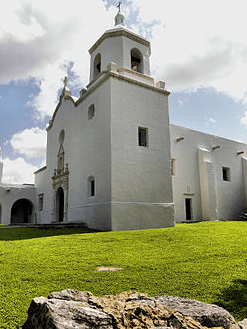 Mission-Nuestra-Señora-del-Espíritu-Santo-de-Zúñiga
Mission-Nuestra-Señora-del-Espíritu-Santo-de-Zúñiga
Louisiana (Spanish: Luisiana) was the name of an administrative district of the Viceroyalty of New Spain from 1762 to 1802 that consisted of territory west of the Mississippi River basin, plus New Orleans. Spain acquired the territory from France, who had named it La Louisiane in honor of King Louis XIV in 1682. It is sometimes known as Spanish Louisiana. The district was retroceded to France, under the terms of the Third Treaty of San Ildefonso (1800) and the Treaty of Aranjuez (1801). In 1802, King Charles IV of Spain published a royal bill on 15 October, effecting the transfer and outlining the conditions.
However, Spain agreed to continue administering the colony until French officials arrived and formalized the transfer (1803). The ceremony was conducted at the Cabildo in New Orleans on 30 November 1803, just three weeks before the formalities of cession from France to the United States pursuant to the Louisiana Purchase.
However, Spain agreed to continue administering the colony until French officials arrived and formalized the transfer (1803). The ceremony was conducted at the Cabildo in New Orleans on 30 November 1803, just three weeks before the formalities of cession from France to the United States pursuant to the Louisiana Purchase.
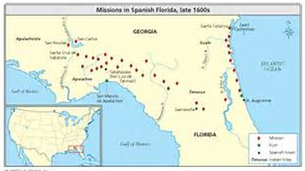
Most people identify the early Spanish missions in the United States with California
or the Southwest. The average American does not associate Spanish missions with
Florida, Georgia, or the southeastern United States. It was only in the twentieth century that a deepening interest in early missions resulted in several new research efforts and the knowledge we have to date. Thanks to Dr. John H. Hann of Tallahassee, a research historian and leading scholar on the missions of Spanish Florida, we now have the most-up-to date findings and writings. Documentation exists of at least 124 missions during the first Spanish occupation (1565-1763) of the southeastern United States. These missionary efforts can be divided into five distinct periods. A pre-mission settlement period followed by a first, second, third, and forth mission period.
or the Southwest. The average American does not associate Spanish missions with
Florida, Georgia, or the southeastern United States. It was only in the twentieth century that a deepening interest in early missions resulted in several new research efforts and the knowledge we have to date. Thanks to Dr. John H. Hann of Tallahassee, a research historian and leading scholar on the missions of Spanish Florida, we now have the most-up-to date findings and writings. Documentation exists of at least 124 missions during the first Spanish occupation (1565-1763) of the southeastern United States. These missionary efforts can be divided into five distinct periods. A pre-mission settlement period followed by a first, second, third, and forth mission period.
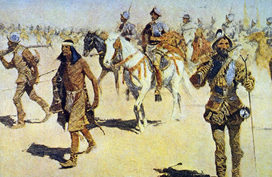
The Earliest Period, 1526-1565, was not highly successful. Only four missions were
attempted, and all were abandoned within 18 months. At the time, La Florida didn't
provide the same rich resources available as other Spanish held territories.
The First Mission Era Period, 1566-1587 best described as tentative and mostly un-
successful, had a total of 13 missions established, with only three still in use in 1587.
Most of the early missionaries were Jesuits, the Franciscans making their first appear-
ance in 1573.
attempted, and all were abandoned within 18 months. At the time, La Florida didn't
provide the same rich resources available as other Spanish held territories.
The First Mission Era Period, 1566-1587 best described as tentative and mostly un-
successful, had a total of 13 missions established, with only three still in use in 1587.
Most of the early missionaries were Jesuits, the Franciscans making their first appear-
ance in 1573.
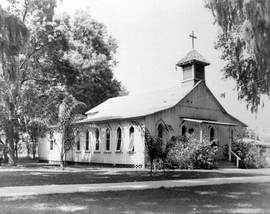
The Second Mission Era Period, 1587-1616, saw success, but also tragedy. Some mis-
sions took root, while others provoked rebellion and Spanish retaliation when five fri-
ars were killed. An unknown epidemic stuck between 1612-1616 killing as many as ten
thousand mission Indians. Though 50 missions were established during this period, it is
hard to say exactly how many were still in operation at its end because it was common
practice by the church to move missions from one location to another. Sometimes
names changed, at other times the same name was used. Almost nothing is known of
this process.
sions took root, while others provoked rebellion and Spanish retaliation when five fri-
ars were killed. An unknown epidemic stuck between 1612-1616 killing as many as ten
thousand mission Indians. Though 50 missions were established during this period, it is
hard to say exactly how many were still in operation at its end because it was common
practice by the church to move missions from one location to another. Sometimes
names changed, at other times the same name was used. Almost nothing is known of
this process.
The Third Mission Era Period, 1616-1655 was one of great missionary activity and serious attrition of the native people, which led to the demise of many earlier missions. Another unknown epidemic took its toll in 1649-1650. Again, smallpox struck in 1655, and two years later, measles. Though it is unknown exactly how many died, it had a devastating effect on the native population. Twenty-nine missions were established during this time. The Forth Mission Era Period, 1656 1702, offers the most documentation to date. Should Cuba ever allow a more thorough investigation of its archives we will likely
find more information on earlier mission efforts. The second half of this period, beginning in 1680, saw mounting pressure from the English colonists in South Carolina and the natives allied with them. That pressure destroyed all of the surviving missions between 1680-1706, Mission populations were killed, carried off, or escaped to St. Augustine area missions and the protection of the Spanish. Though the Spain held St. Augustine until 1763, English advances and the destruction of missions virtually ended all missionary activity by 1706. REFERENCES Dr. John H. Hann
find more information on earlier mission efforts. The second half of this period, beginning in 1680, saw mounting pressure from the English colonists in South Carolina and the natives allied with them. That pressure destroyed all of the surviving missions between 1680-1706, Mission populations were killed, carried off, or escaped to St. Augustine area missions and the protection of the Spanish. Though the Spain held St. Augustine until 1763, English advances and the destruction of missions virtually ended all missionary activity by 1706. REFERENCES Dr. John H. Hann
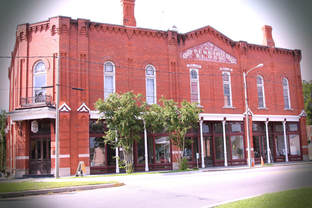 Monticello Opera House
Monticello Opera House
SPANISH MISSIONS IN FLORIDA AND THE BORDERLANDS CONFERENCE
Monticello, Florida in the Historical Monticello Opera House
October 5-7, 2017
Speakers in the Opera House on the 5th and 6th (listed below)
A self-driving tour of Mission San Luis de Apalachee on the 7th
A guided tour on the Wacissa River with members of the Apalachee Tribe
Monticello, Florida in the Historical Monticello Opera House
October 5-7, 2017
Speakers in the Opera House on the 5th and 6th (listed below)
A self-driving tour of Mission San Luis de Apalachee on the 7th
A guided tour on the Wacissa River with members of the Apalachee Tribe
Scheduled Speakers (click on name for bio and title for video presentation)
-
George E. Avery
-
"The Archaeology of the Spanish Missions in deep East Texas/Northwest Louisiana: A summary of the last 20 years"
<
>
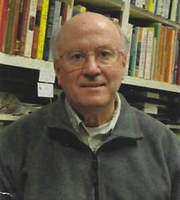
George E. Avery Is currently Director ofthe Archaeology Lab at Stephen F. Austin State University (SFA),
and has had this title since 2012. His job responsibilities are primarily taking care of the collections accord-
ing to the standards for certification from the Texas Historical Commission, and he also does various pro-
jects outside the University. He is currently a member of the Register for Professional Archaeologists, the
Society for Historical Archaeology, the Texas Folklore Society, Texas Association of Museums, Deep East
Texas Archeological Society, the Louisiana Archaeological Society, the Texas Archeological Society, and the
East Texas Historical Association.
and has had this title since 2012. His job responsibilities are primarily taking care of the collections accord-
ing to the standards for certification from the Texas Historical Commission, and he also does various pro-
jects outside the University. He is currently a member of the Register for Professional Archaeologists, the
Society for Historical Archaeology, the Texas Folklore Society, Texas Association of Museums, Deep East
Texas Archeological Society, the Louisiana Archaeological Society, the Texas Archeological Society, and the
East Texas Historical Association.
|
George Avery, "The Archaeology of the Spanish Missions in deep East Texas/Northwest Louisiana: A summary of the last 20 years" by George E. Avery
Click play to watch and enlarge to full screen. |
|
-
Elliot Blair
-
"A Social Network Approach to Exploring Identity at Mission Santa Catalina de Guale"
<
>
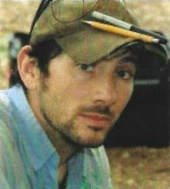
Elliot Blair is an Assistant Professor at the University of Alabama. He received his doctorate from the University of California, Berkeley in 2015. His research sits at the intersection of empirical, archaeometric analyses and a social archaeology of materiality and identity, focusing on questions of population aggregation in the colonial Southeast.
|
"A Social Network Approach to Exploring Identity at
Mission Santa Catalina de Guale" by Elliot Blair Click play to watch and enlarge to full screen. |
|
-
John Worth
-
"The Changing Role of Missionaries and Missions in Spanish Florida, 1513-1763"
<
>
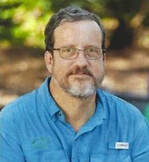
Dr. John E. Worth is professor of historical archaeology in the Department of Anthropology at the University of West Florida in Pensacola. He has conducted ar.chaeological and ethnohistorical research for more than three decades in the Southeastern U.S., primarily focusing on the consequences of interaction between Native Americans and Spaniards during the colonial era. A Georgia native, Dr. Worth received his doctorate in anthropology from the University of Florida in 1992, and spent 15 years in public archaeology program administration in Georgia and Florida before becoming a member of the faculty at UWF in 2007. He is author of Discovering Florida: First-Contact Narratives of Spanish Expeditions along the Lower Gulf Coast (2014), The Timucuan Chiefdoms of Spanish Florida (1998), The Struggle for the Georgia Coast (1995 & 2007), and more than one hundred-fifty other professional and lay publications and presented papers.
|
"The Changing Role of Missionaries and Missions in Spanish Florida, 1513-1763" by John Worth
Presented by Dr. Judy Bense (University of West Florida) Click play to watch and enlarge to full screen. |
|
-
Mariah D. Wade
-
"Spanish Missions' legacies and New Perspectives"
<
>
|
"Spanish Missions' legacies and New Perspectives"
by Mariah D. Wade Click play to watch and enlarge to full screen. |
|
-
Richard W. Jefferies
-
"Community Structure and Organization at Mission San Josephde Sapala, Sapelo Island, Georgia"
<
>
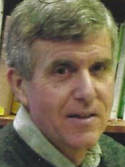
Richard W. Jefferies is a professor and Director of Undergraduate Studies in the Department of Anthropology at the University of Kentucky. His research interest include Prehistoric hunter-gatherer societies of the Southeastern and Midwestern United States; mortuary/ritual behavior in intermediate level societies, Mississippian settlement and subsistence systems; lithic analysis; cultural ecology; prehistoric economic and interaction systems and Spanish Mission period in the Southeastern United States.
|
"Community Structure and Organization at Mission San Josephde Sapala, Sapelo Island, Georgia"
by Richard W. Jefferies Click play to watch and enlarge to full screen. |
|
-
Keith Ashley
-
"The Maritime Timucua: Mocama Missions by the Sea"
<
>
|
"The Maritime Timucua: Mocama Missions by the Sea"
by Keith Ashley & Robert Thunen Click play to watch and enlarge to full screen. |
|
-
George Broadwell
-
"Timucua language and social hierarchy: Evidence from Christian miracle stories"
<
>
|
"Timucua language and social hierarchy: Evidence from Christian miracle stories"
by George Broadwell Click play to watch and enlarge to full screen. |
|
-
Willet Boyer
-
"Responses to Missionization: The Historical and Archaeological Evidence from Two Mission Sites in Northern Central Florida"
<
>
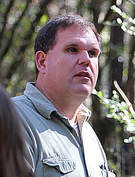
Willet A. Boyer, III, received his master's and Ph.D in anthropology from the University of Florida, with a focus on the archaeology of the late pre-contact, early contact, and mission eras in Florida and the Southeast. He has worked at multiple early contact and mission sites throughout Florida. He is a seventh-generation native of Marion County in northern central Florida and currently holds the position of Associate Scholar with the Aucilla Research Institute, Inc.
|
"Responses to Missionization: The Historical and Archaeological Evidence from Two Mission Sites in Northern Central Florida" by Willet Boyer
Click play to watch and enlarge to full screen. |
|
-
Marvin Smith
-
"Excavations at the presumptive site of Mission Santa Cruz de Cachipile"
<
>
|
"Excavations at the presumptive site of Mission Santa Cruz de Cachipile" by Marvin Smith
Click play to watch and enlarge to full screen. |
|
-
Alissa Slade-Lotane
-
"An Analysis of Artifacts and Archaeology at 8E106, a Spanish Mission Site in Florida"
<
>
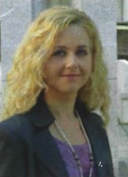
Alissa Siade-Lotane is the Chief of the Bureau of Historic Preservation at the Florida Department of State and a Deputy State Historic Preservation Officer for the State of Florida. She holds an M.A. in Anthropology and a Museum Studies Certification from Florida State University, and a B.S. in History from Troy University.
|
"An Analysis of Artifacts and Archaeology at 8E106, a Spanish Mission Site in Florida" by Alisa Siade-Lotane
Click play to watch and enlarge to full screen. |
|
-
Dr. Tanya M. Peres
-
From Farm to Table: "Investigating Apalachee Foodways in the Mission Period"
<
>
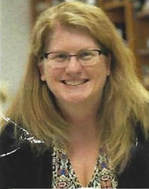
Dr. Tanya M. Peres is an Associate Professor of Anthropology at Florida State University. Dr. Peres earned a PhD in Anthropology from the University of Florida (2001) and an MA (1997) and BA (1995) from the Florida State University, both in Anthropology. She is a Registered Professional Archaeologist since 2001 and has nearly two decades of field and lab experience on academic and applied prehistoric and historic archaeological projects across the Southeastern United States, Panama, Mexico, and Scotland. Dr. Peres's research interests include the relationships between humans and their environments, humans and animals, foodways, and the incorporation of animals into native worldviews. She currently directs the FSU Apalachee-Spanish Mission Archaeology Project, the FSU Maritime Woodland along the Florida Gulf Coast Project, and the Middle Cumberland Archaeology Project. As a zooarchaeologist Dr. Peres collaborates with local, state, and federal agencies as well as CRM firms. She has researched and published on zooarchaeological topics ranging from ancient and historic subsistence practices to the use of animal bone and teeth implements in indigenous tattooing traditions to the symbolic power of animals in native cosmologies, medicine, and spiritual practices.
|
From Farm to Table: "Investigating Apalachee Foodways in the Mission Period" by Tanya M. Peres
Click play to watch and enlarge to full screen. |
|
-
Mary Glowacki
-
Discusssant & Overview
<
>
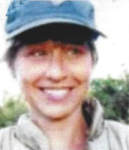
Mary Glowacki is a State Archaeologist and Chief, Bureau of Archaeological Research. Florida Division of Historical Resources. Mary Glowacki has served as supervisor for its Public Lands Archaeology program.
She has been very active in the Panhandle Archaeological Society at Tallahassee (PAST). Mary has taught
various courses in anthropology and archaeology at Florida State University Additionally she has overseen
a number of grant-funded archaeological projects in Peru.
She has been very active in the Panhandle Archaeological Society at Tallahassee (PAST). Mary has taught
various courses in anthropology and archaeology at Florida State University Additionally she has overseen
a number of grant-funded archaeological projects in Peru.
|
Discussant & Overview by Mary Glowacki
Click play to watch and enlarge to full screen. |
|
-
Nicholas Yarbrough
-
"An Overview of Past Excavations, Interpretations and Current Questions at 8LE120, Mission San Damian de Escambe"
<
>
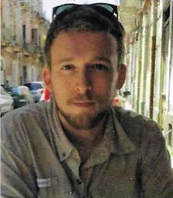
Nicholas Yarbrough works for the Florida Bureau of Archaeological Research, and he is in his first year of
graduate school in the Department of Anthropology at Florida State University. Before his current position
at BAR, Nicholas worked for one year as a historical interpreter at Mission San Luis which sparked his interest
in Mission archaeology. Since then, he has continued to delve deeper into the history and archaeology of the Spanish periods in Florida. Nicholas' research interests include Spanish ironworking, weapon and tool diffusion in colonial contexts, and mission land use. He seeks to bring the previous research done at lesser known sites on state lands, such as Mission San Damian, to light and to carry out and promote further research on them.
graduate school in the Department of Anthropology at Florida State University. Before his current position
at BAR, Nicholas worked for one year as a historical interpreter at Mission San Luis which sparked his interest
in Mission archaeology. Since then, he has continued to delve deeper into the history and archaeology of the Spanish periods in Florida. Nicholas' research interests include Spanish ironworking, weapon and tool diffusion in colonial contexts, and mission land use. He seeks to bring the previous research done at lesser known sites on state lands, such as Mission San Damian, to light and to carry out and promote further research on them.
|
"An Overview of Past Excavations, Interpretations and Current Questions at 8LE120, Mission San Damian de Escambe" by Nicholas Yarbrough
Click play to watch and enlarge to full screen. |
|
-
Jerry W. Lee
-
"Mission San Luis de Apalachee"
<
>
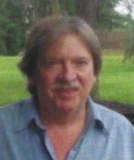
Jerry W. Lee Except for brief dabbles in French Colonial and prehistoric archaeology, Mr. Lee has been in-
volved with Spanish mission archaeology throughout his career. He received his undergraduate degree in Anthropology from FSU, attending Dr. Rochelle Marrinan's field school at the Apalachee mission of Patale. He joined the Florida Department of State's research at Mission San Luis not long after, in 1989. Mr. Lee feels fortunate to have been able to be a part of San Luis for so long. He is also gratified to see the research from San Luis translated into faithful reproductions of many of the buildings that once existed here for the education and enjoyment of the public.
volved with Spanish mission archaeology throughout his career. He received his undergraduate degree in Anthropology from FSU, attending Dr. Rochelle Marrinan's field school at the Apalachee mission of Patale. He joined the Florida Department of State's research at Mission San Luis not long after, in 1989. Mr. Lee feels fortunate to have been able to be a part of San Luis for so long. He is also gratified to see the research from San Luis translated into faithful reproductions of many of the buildings that once existed here for the education and enjoyment of the public.
|
"Mission San Luis de Apalachee" by Jerry W. Lee
Click play to watch and enlarge to full screen. |
|
-
George Cole
-
"The Tocobaga and the Wacissa Canal - Lifeline of the Spanish Missions in Jefferson County, Florida"
<
>
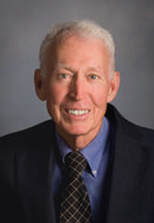
George Cole, Ph.D, PE, PLS, is a professional engineer, surveyor and physical geographer. He is an adjunct professor at Florida State University. He has served as Chairman of the Jefferson County (Florida) Planning Commission and on the Governing Board of the Suwannee River Water Management District. Cole holds a bachelor of science degree from Tulane as well as master of science and doctor of philosophy degrees from FSU. He is the author of numerous technical papers as well as several books including Water Boundaries (John Wiley & Sons, 1997) and Surveyor Reference Manual (Professional Publication, 2010). He has also written chapters in Brown's Boundary Control and Legal Principles (John Wiley & Sons, 2014) and Brown's Evidence and Procedures for Boundary Location (John Wiley & Sons, 2002).
|
"The Tocobaga and the Wacissa Canal - List of the Spanish Missions in Jefferson County, Florida"
by George Cole Click play to watch and enlarge to full screen. |
|
-
Rochelle A. Marrinan
-
"The Lives of Friars in Apalachee Province"
<
>
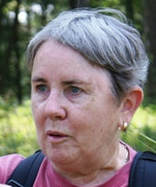
Rochelle A. Marrinan has been a member of the faculty of the Department of Anthropology since 1982. From 1984 to 2002, she directed the department's annual spring field schools for undergraduate and graduate students at Mission Patale, the O'Connell Mission site, and the Castro site - all seventeenth-century archaeologicallocations with Missicn-period cultural materials. She is a Registered Professional Archaeologist and currently serves as department chair.
|
"The Lives of Friars in Apalachee Province"
by Rochelle A. Marrinan Click play to watch and enlarge to full screen. |
|
-
Gilmer "TJ" Bennett
-
The Apalachee from Mobile, Alabama to Louisiana
<
>
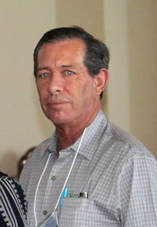
Gilmer "TJ" Bennett a Councilman of the Apalachee lives in Pineville, Louisiana where the only documented survivors of the Apalachee that were once numerous in the Red Hills area of Florida now live. In 1763, about 80 of the Apalahee Indians living in Mobile, Alabama relocated to the area on the Red River between Natchitoches and Alexandria, Louisiana in Rapides Parish. Today, many of the descendants still remain in the area and have applied for federal recognition using the Rapides Parish records.
|
Gilmer "TJ" Bennett discusses the history and background of the Apalachee as they moved from Mobile, Alabama to the area on the Red River between Natchitoches and Alexandria, Louisiana.
|
|
Old Stories and New Discoveries
Another conference in the First Floridian Series held in Monticello, Florida October 4-5, 2019
CLICK HERE to watch speakers at the conference.
CLICK HERE to watch speakers at the conference.
|
The ARI website was funded in part by a grant from The Perkins Charitable Foundation. |
|
